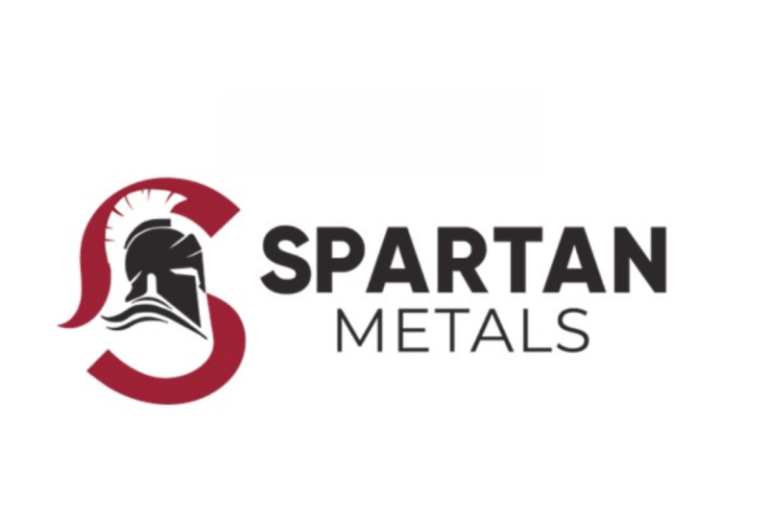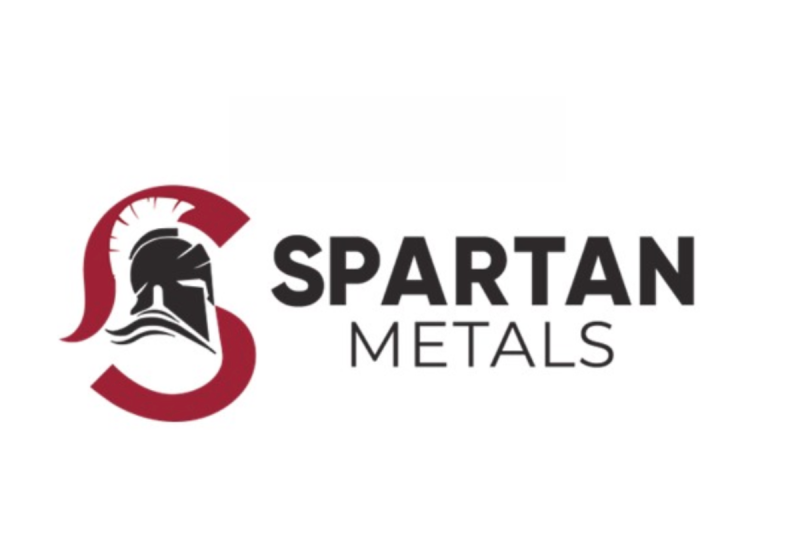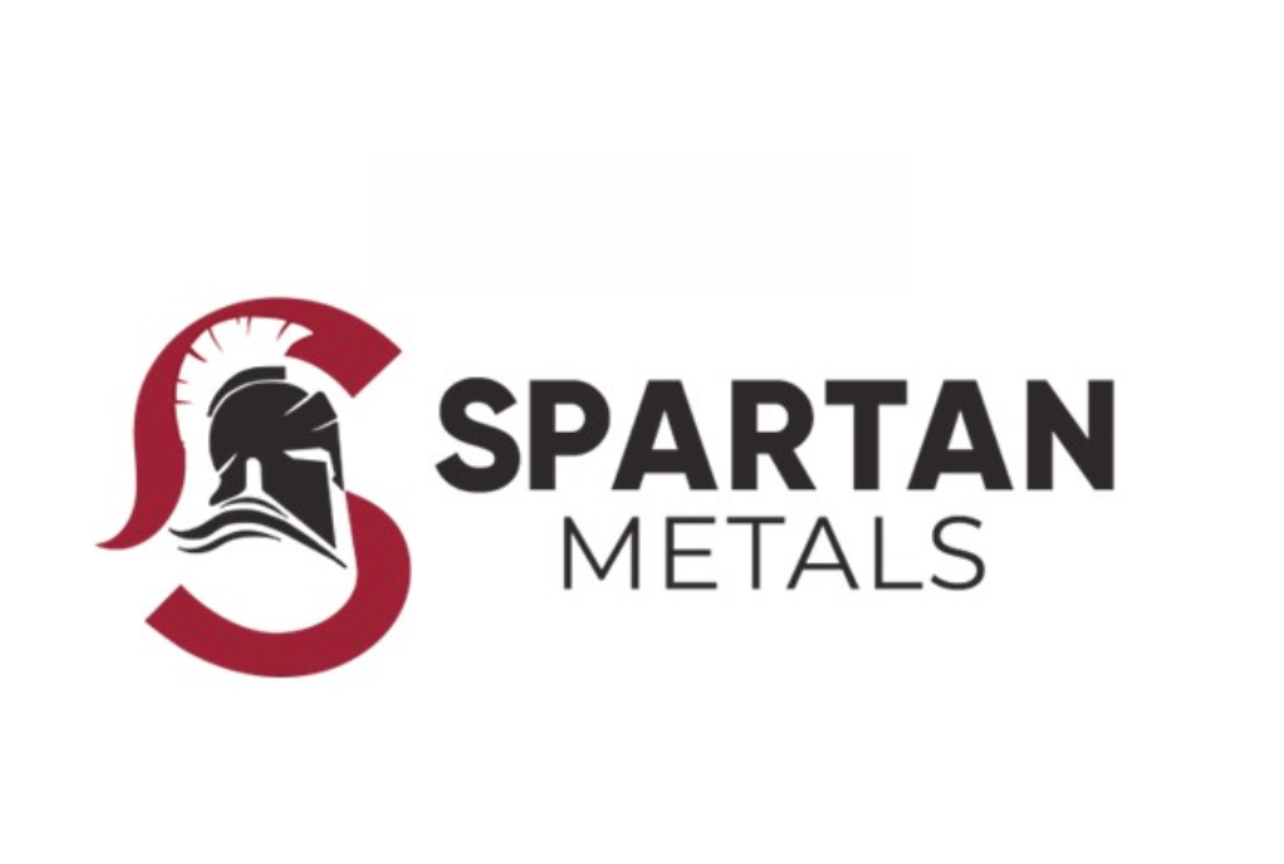Silverco Mining Ltd. (TSXV: SICO) (‘Silverco’ or the ‘Company’) is pleased to announce a validated and updated Mineral Resource Estimate (‘MRE’) for its 100%-owned Cusi Project (‘Cusi’), located approximately 90 kilometres northwest of First Majestic’s Los Gatos Mine in Chihuahua, Mexico. The Updated Mineral Resource Estimate was completed by Ben Eggers MAIG, P.Geo., and Allan Armitage, Ph.D., P.Geo., of SGS Geological Services.
Highlights of the 2025 Cusi Mineral Resource Estimate:
- Substantial High-Grade Silver Inventory:
- Measured & Indicated (‘M&I’) Resources: 4.89 million tonnes grading 262 g/t silver equivalent (‘AgEq’) containing 41.2 million ounces AgEq.
- Inferred Resources: 4.07 million tonnes grading 243 g/t AgEq containing 31.8 million ounces AgEq.
- San Miguel Growth: The San Miguel Vein System has emerged as a significant growth driver, contributing 10.8 Moz AgEq (Indicated) and 16.2 Moz AgEq (Inferred) to the global resource, validating the Company’s focus on this new bulk-tonnage potential zone.
- Improved Geological Confidence: The updated model utilizes a tighter search radius for Inferred resources (reduced from 200m to 100m) and increased cut-off grades (increased from 95 g/t AgEq to 120 g/t AgEq), resulting in a more conservative and robust estimate focused on profitable ounces.
- Silver Primary Deposit: 86% of the value of the Updated Mineral Resource Estimate is comprised of silver.
Comparison to historical 2020 MRE:
The historical 2020 MRE hosted Measured & Indicated resources of 5.4Mt grading 215 g/t AgEq containing 37.0 Moz AgEq and Inferred resources of 4.9Mt grading 183 g/t AgEq containing 28.8 Moz AgEq. Since the historical 2020 MRE, approximately 0.81Mt of diluted resources grading 182 g/t AgEq containing 4.8 Moz AgEq were depleted through mining. Additionally, the impact of reducing the inferred search radius from 200m to 100m, resulted in a reduction of inferred resources of approximately 2.1 Mt containing 10.1 Moz AgEq. Accounting for these impacts, the 2025 updated MRE results in the following highlights:
- 28% increase in M&I resources, net of depletion, from 32.2 to 41.2 Moz AgEq
- 22% increase in M&I grade, from 215 to 262 g/t AgEq
- 9% increase in M&I tonnes, net of depletion, from 4.5Mt to 4.9Mt
- 70% increase in inferred resources, net of search reduction, from 18.7 to 31.8 Moz AgEq
Historical resources were reported at a 95 g/t AgEq cut-off grade for the historical 2020 MRE. Details of the estimate are provided in Sierra Metals November 18, 2020 press release and a NI 43-101 compliant technical report filed in December, 2020. The 2020 MRE is considered historical in nature, and Silverco is not treating the historical resources as current. The historical resources for the Cusi deposits are superseded by the 2025 Measured, Indicated and Inferred MRE for the deposits.
Mark Ayranto, CEO of Silverco, commented:
‘This validated and updated Mineral Resource Estimate represents a crucial step in our development of Cusi towards a restart decision. Our technical team has focused on quality over quantity, delivering a robust resource model that reduces internal waste and tightens estimation parameters to better reflect the potential of the deposit. While we have applied more conservative constraints than previous estimates, the grade profile remains exceptional at over 260 g/t AgEq in the Measured and Indicated categories.
‘Most importantly, this MRE confirms what our exploration success at San Miguel has been telling us. This zone now hosts a substantial portion of our resource and exhibits the widths and continuity required for more efficient bulk mining methods. With the system wide open, Cusi has a solid foundation of high-grade ounces and a clear path for continued expansion.
‘This MRE update only included a portion of our 2025 drilling, and recent results such as hole CU-25-37’s 8.8m of 319 g/t AgEq and 12.4m of 273 g/t AgEq have not been incorporated into this resource. We believe that the remainder of 2025’s drilling has already the potential to substantially add to this resource.’
2025 CUSI Mineral Resource Statement
Highlights of the Cusi Project underground Mineral Resource Estimate are as follows:
- Combined Measured and Indicated Mineral Resources are estimated at 4.89 Mt grading 206 g/t silver, 0.15 g/t gold, 0.73% lead, and 0.86% zinc (262 g/t AgEq). The Mineral Resource Estimate includes Measured Mineral Resources of 6.1 Moz of silver, 1.8 koz of gold, 5.6 Mlbs of lead, and 6.3 Mlbs of zinc (6.7 Moz of AgEq) and Indicated Mineral Resources of 26.3 Moz of silver, 22.2 koz of gold, 72.7 Mlbs of lead, and 86.5 Mlbs of zinc (34.4 Moz of AgEq).
- Inferred Mineral Resources are estimated at 4.07 Mt grading 172 g/t silver, 0.17 g/t gold, 0.89% lead, and 1.20% zinc (243 g/t AgEq). The Mineral Resource Estimate includes Inferred Mineral Resources of 22.5 Moz of silver, 22.2 koz of gold, 79.5 Mlbs of lead, and 107.5 Mlbs of zinc (31.7 Moz of AgEq).
Table 1: Cusi Project Underground Mineral Resource Estimate, October 20, 2025
Resource
Class |
Mass |
Average Grade |
Material Content |
| Ag |
Au |
Pb |
Zn |
AgEq |
Ag |
Au |
Pb |
Zn |
AgEq |
| Mt |
g/t |
g/t |
% |
% |
g/t |
koz |
koz |
Mlb |
Mlb |
koz |
| Measured |
0.69 |
277 |
0.08 |
0.37 |
0.42 |
305 |
6,114 |
1.8 |
5.6 |
6.3 |
6,725 |
| Indicated |
4.21 |
195 |
0.16 |
0.78 |
0.93 |
255 |
26,330 |
22.2 |
72.7 |
86.5 |
34,433 |
| M + I |
4.89 |
206 |
0.15 |
0.73 |
0.86 |
262 |
32,443 |
24.0 |
78.3 |
92.8 |
41,157 |
| Inferred |
4.07 |
172 |
0.17 |
0.89 |
1.20 |
243 |
22,479 |
22.2 |
79.5 |
107.5 |
31,753 |
Cusi Project Mineral Resource Estimate Notes:
(1) The mineral resource was estimated by Ben Eggers, MAIG, P.Geo. of SGS Geological Services, an independent Qualified Person as defined by NI 43-101. Eggers conducted a site visit to the Cusi Property on September 22-23, 2025. The mineral resource was peer reviewed by Allan Armitage, Ph.D., P.Geo. of SGS Geological Services, an independent Qualified Person as defined by NI 43-101.
(2) The classification of the Mineral Resource Estimate into Indicated and Inferred mineral resources is consistent with current 2014 CIM Definition Standards for Mineral Resources and Mineral Reserves. The effective date of the Cusi Project Mineral Resource Estimate (MRE) is October 20, 2025. This is the close out date for the final mineral resource drilling database.
(3) All figures are rounded to reflect the relative accuracy of the estimate and numbers may not add due to rounding.
(4) All mineral resources are presented undiluted and in situ, constrained by continuous 3D wireframe models (considered mineable shapes), and are considered to have reasonable prospects for eventual economic extraction. The mineral resource is exclusive of mined out material.
(5) Mineral resources are not mineral reserves. Mineral resources which are not mineral reserves, do not have demonstrated economic viability. An Inferred Mineral Resource has a lower level of confidence than that applying to an Indicated or Measured Mineral Resource and must not be converted to a Mineral Reserve. It is reasonably expected that the majority of Inferred Mineral Resources could be upgraded to Indicated or Measured Mineral Resources with continued exploration.
(6) The Cusi Project MRE is based on a validated database which includes data from 2,052 surface and underground drillholes totalling 360,237 m completed between 2006 and October 2025 and 21,522 channels totalling 48,786 m completed between 2013 and 2023. The resource database totals 105,585 assay intervals representing 119,756 m of drillhole data and 71,605 assay intervals representing 48,783 m of channel data.
(7) The mineral resource estimate is based on 63 three-dimensional (‘3D’) resource models representing epithermal veins which comprise the Cusi vein systems. 3D models of mined out areas were used to exclude mined out material from the current MRE.
(8) Grades for Ag, Au, Pb, and Zn are estimated for each mineralization domain using 1.5 m capped composites assigned to that domain. To generate grade within the blocks, the inverse distance squared (ID2) interpolation method was used for all domains.
(9) An average density value of 2.75 g/cm3 was assigned to all domains based on a database of 244 samples.
(10) It is envisioned that the Cusi Project deposits may be mined using underground mining methods. Mineral resources are reported at a base case cut-off grade of 120 g/t AgEq. The mineral resource grade blocks were quantified above the base case cut-off grade, below surface, within the constraining mineralized wireframes, and exclusive of mined out material.
(11) The underground base case cut-off grade of 120 g/t AgEq considers metal prices of US$30/oz Ag, US$2400/oz Au, US$1.00/lb Pb, and US$1.35/lb Zn and metal recoveries of 90% for Ag, 50% for Au, 90% for Pb, and 60% for Zn.
(12) The underground base case cut-off grade of 120 g/t AgEq considers a mining cost of US$60.00/t rock and a processing, treatment and refining, transportation and G&A cost of US$35.00/t mineralized material.
(13) The estimate of Mineral Resources may be materially affected by environmental, permitting, legal, title, taxation, socio-political, marketing, or other relevant issues.
Table 2: Cusi Project Underground Mineral Resource Estimate by Area, October 20, 2025
| Area |
Resource Class |
Mass |
Average Grade |
Material Content |
| Ag |
Au |
Pb |
Zn |
AgEq |
Ag |
Au |
Pb |
Zn |
AgEq |
| Mt |
g/t |
g/t |
% |
% |
g/t |
koz |
koz |
Mlb |
Mlb |
koz |
| San Juan |
Indicated |
0.16 |
232 |
0.21 |
0.17 |
0.20 |
259 |
1,199 |
1.1 |
0.6 |
0.7 |
1,338 |
| Inferred |
0.12 |
295 |
0.07 |
0.29 |
0.51 |
324 |
1,156 |
0.3 |
0.8 |
1.4 |
1,267 |
| Promontorio West |
Indicated |
1.03 |
208 |
0.10 |
0.43 |
0.58 |
244 |
6,893 |
3.4 |
9.8 |
13.1 |
8,078 |
| Inferred |
0.41 |
199 |
0.19 |
0.78 |
0.79 |
257 |
2,592 |
2.5 |
7.0 |
7.1 |
3,342 |
| Promontorio East |
Measured |
0.53 |
285 |
0.08 |
0.3 |
0.36 |
309 |
4,824 |
1.3 |
3.4 |
4.1 |
5,229 |
| Indicated |
0.24 |
211 |
0.19 |
0.81 |
0.60 |
264 |
1,609 |
1.5 |
4.2 |
3.1 |
2,006 |
| M + I |
0.76 |
262 |
0.11 |
0.46 |
0.43 |
295 |
6,432 |
2.8 |
7.7 |
7.2 |
7,235 |
| Inferred |
0.21 |
231 |
0.32 |
0.86 |
0.83 |
301 |
1,520 |
2.1 |
3.9 |
3.8 |
1,987 |
| Eduwiges |
Indicated |
0.53 |
159 |
0.25 |
1.93 |
2.06 |
287 |
2,694 |
4.2 |
22.3 |
23.9 |
4,853 |
| Inferred |
0.24 |
92 |
0.18 |
1.94 |
2.39 |
224 |
694 |
1.4 |
10.0 |
12.4 |
1,697 |
| San Miguel |
Indicated |
1.30 |
193 |
0.15 |
0.83 |
1.11 |
258 |
8,065 |
6.2 |
23.9 |
31.7 |
10,786 |
| Inferred |
2.03 |
170 |
0.14 |
1.02 |
1.42 |
249 |
11,117 |
9.3 |
45.5 |
63.5 |
16,237 |
| San Nicolas |
Indicated |
0.76 |
196 |
0.17 |
0.41 |
0.43 |
233 |
4,798 |
4.2 |
6.9 |
7.2 |
5,684 |
| Inferred |
0.62 |
175 |
0.14 |
0.28 |
0.45 |
207 |
3,472 |
2.9 |
3.8 |
6.2 |
4,105 |
| Santa Rosa de Lima |
Measured |
0.16 |
251 |
0.09 |
0.60 |
0.62 |
291 |
1,290 |
0.5 |
2.1 |
2.2 |
1,496 |
| Indicated |
0.19 |
176 |
0.29 |
1.20 |
1.63 |
276 |
1,072 |
1.8 |
5.0 |
6.8 |
1,688 |
| M + I |
0.35 |
210 |
0.20 |
0.93 |
1.17 |
283 |
2,362 |
2.2 |
7.2 |
9.0 |
3,183 |
| Inferred |
0.45 |
133 |
0.27 |
0.86 |
1.34 |
216 |
1,928 |
3.8 |
8.5 |
13.3 |
3,118 |
| Total |
Measured |
0.69 |
277 |
0.08 |
0.37 |
0.42 |
305 |
6,114 |
1.8 |
5.6 |
6.3 |
6,725 |
| Indicated |
4.21 |
195 |
0.16 |
0.78 |
0.93 |
255 |
26,330 |
22.2 |
72.7 |
86.5 |
34,433 |
| M + I |
4.89 |
206 |
0.15 |
0.73 |
0.86 |
262 |
32,443 |
24.0 |
78.3 |
92.8 |
41,157 |
| Inferred |
4.07 |
172 |
0.17 |
0.89 |
1.20 |
243 |
22,479 |
22.2 |
79.5 |
107.5 |
31,753 |
(1) The underground base case cut-off grade of 120 g/t AgEq considers metal prices of US$30/oz Ag, US$2400/oz Au, US$1.00/lb Pb, and US$1.35/lb Zn, metal recoveries of 90% for Ag, 50% for Au, 90% for Pb, and 60% for Zn, a mining cost of US$60.00/t rock, and a processing, treatment and refining, transportation and G&A cost of US$35.00/t mineralized material.
Table 3: Cusi Project Mineral Resource Estimate Sensitivity Table, October 20, 2025
| Resource Class |
Cut-off Grade (AgEq
g/t) |
Mass |
Average Grade |
Material Content |
| Ag |
Au |
Pb |
Zn |
AgEq |
Ag |
Au |
Pb |
Zn |
AgEq |
| Mt |
g/t |
g/t |
% |
% |
g/t |
koz |
koz |
Mlb |
Mlb |
koz |
| Measured |
80 g/t |
0.90 |
232 |
0.07 |
0.34 |
0.38 |
257 |
6,668 |
2.0 |
6.7 |
7.5 |
7,388 |
| 90 g/t |
0.83 |
244 |
0.07 |
0.35 |
0.39 |
269 |
6,531 |
1.9 |
6.4 |
7.2 |
7,222 |
| 100 g/t |
0.78 |
254 |
0.07 |
0.35 |
0.40 |
281 |
6,397 |
1.9 |
6.1 |
6.9 |
7,064 |
| 120 g/t |
0.69 |
277 |
0.08 |
0.37 |
0.42 |
305 |
6,114 |
1.8 |
5.6 |
6.3 |
6,725 |
| 150 g/t |
0.56 |
312 |
0.09 |
0.40 |
0.45 |
342 |
5,643 |
1.6 |
4.9 |
5.5 |
6,188 |
| 200 g/t |
0.40 |
375 |
0.11 |
0.45 |
0.49 |
409 |
4,860 |
1.4 |
4.0 |
4.3 |
5,299 |
| 250 g/t |
0.29 |
445 |
0.13 |
0.49 |
0.53 |
483 |
4,132 |
1.2 |
3.2 |
3.4 |
4,484 |
| 300 g/t |
0.22 |
512 |
0.14 |
0.53 |
0.57 |
553 |
3,571 |
1.0 |
2.5 |
2.7 |
3,858 |
| Indicated |
80 g/t |
5.90 |
161 |
0.13 |
0.63 |
0.76 |
210 |
30,612 |
25.2 |
81.9 |
99.1 |
39,827 |
| 90 g/t |
5.42 |
170 |
0.14 |
0.67 |
0.81 |
221 |
29,566 |
24.3 |
79.6 |
96.2 |
38,506 |
| 100 g/t |
4.99 |
178 |
0.15 |
0.70 |
0.85 |
232 |
28,512 |
23.6 |
77.3 |
93.0 |
37,175 |
| 120 g/t |
4.21 |
195 |
0.16 |
0.78 |
0.93 |
255 |
26,330 |
22.2 |
72.7 |
86.5 |
34,433 |
| 150 g/t |
3.33 |
218 |
0.18 |
0.90 |
1.06 |
286 |
23,388 |
19.7 |
66.1 |
77.6 |
30,664 |
| 200 g/t |
2.30 |
257 |
0.21 |
1.08 |
1.25 |
337 |
18,988 |
15.6 |
54.8 |
63.2 |
24,913 |
| 250 g/t |
1.61 |
296 |
0.24 |
1.22 |
1.39 |
386 |
15,290 |
12.3 |
43.4 |
49.3 |
19,938 |
| 300 g/t |
1.09 |
338 |
0.26 |
1.38 |
1.54 |
439 |
11,876 |
9.3 |
33.1 |
37.0 |
15,396 |
| Inferred |
80 g/t |
5.73 |
143 |
0.14 |
0.72 |
1.00 |
201 |
26,266 |
26.0 |
90.9 |
126.1 |
37,065 |
| 90 g/t |
5.27 |
150 |
0.15 |
0.76 |
1.04 |
211 |
25,377 |
25.1 |
88.0 |
121.2 |
35,787 |
| 100 g/t |
4.83 |
157 |
0.16 |
0.80 |
1.10 |
222 |
24,424 |
24.2 |
85.4 |
116.8 |
34,469 |
| 120 g/t |
4.07 |
172 |
0.17 |
0.89 |
1.20 |
243 |
22,479 |
22.2 |
79.5 |
107.5 |
31,753 |
| 150 g/t |
3.00 |
199 |
0.20 |
1.05 |
1.38 |
282 |
19,192 |
18.9 |
69.7 |
91.1 |
27,135 |
| 200 g/t |
1.87 |
246 |
0.24 |
1.36 |
1.67 |
347 |
14,786 |
14.4 |
56.2 |
69.1 |
20,924 |
| 250 g/t |
1.37 |
277 |
0.27 |
1.57 |
1.87 |
393 |
12,252 |
12.0 |
47.6 |
56.8 |
17,358 |
| 300 g/t |
1.00 |
310 |
0.31 |
1.76 |
2.03 |
437 |
9,965 |
9.8 |
38.8 |
44.8 |
14,061 |
(1) Underground mineral resources are reported at a base case cut-off grade of 120 g/t AgEq (highlighted). Values in this table reported above and below the base case cut-off grades should not be misconstrued with a Mineral Resource statement. The values are only presented to show the sensitivity of the block model estimate to the base case cut-off grade.
(2) All values are rounded to reflect the relative accuracy of the estimate and numbers may not add due to rounding.
Qualified Persons
The mineral resource was estimated by Ben Eggers, MAIG, P.Geo. of SGS Geological Services, an independent Qualified Person as defined by NI 43-101. Eggers conducted a site visit to the Cusi Property on September 22-23, 2025. The mineral resource was peer reviewed by Allan Armitage, Ph.D., P.Geo. of SGS Geological Services, an independent Qualified Person as defined by NI 43-101.
Technical Disclosure
The scientific and technical information contained in this news release has been reviewed and approved by Nico Harvey, P.Eng., Vice President Project Development of Silverco, a Qualified Person as defined in National Instrument 43-101. Mr. Harvey is not independent of the Company. Mr. Harvey has reviewed the sampling, analytical and QA/QC data underlying the technical information disclosed herein.
No production decision has been made at Cusi. Any decision to restart operations will follow completion of the requisite technical, financial and permitting milestones.
About Silverco Mining Ltd.
The Company owns a 100% interest in the 11,665-hectare Cusi Project located in Chihuahua State, Mexico (the ‘Cusi Property’). It lies within the prolific Sierra Madre Occidental gold-silver belt. There is an existing 1,200 ton per day mill with tailings capacity at the Cusi Property.
The Cusi Property is a past-producing underground silver-lead-zinc-gold project approximately 135 kilometres west of Chihuahua City. The Cusi Property boasts excellent infrastructure, including paved highway access and connection to the national power grid.
The Cusi Property hosts multiple historical Ag-Au-Pb-Zn producing mines each developed along multiple vein structures. The Cusi Property hosts several significant exploration targets, including the extension of a newly identified downthrown mineralized geological block and additional potential through claim consolidation.
On Behalf of the Board of Directors,
‘Mark Ayranto’
Mark Ayranto, President & CEO
Email: mayranto@silvercomining.com
For further information, please contact:
Investor relations & Communications
Email: info@silvercomining.com
www.silvercomining.com
Neither the TSX Venture Exchange nor its Regulation Services Provider (as that term is defined in the policies of the TSX Venture Exchange) accepts responsibility for the adequacy or accuracy of this release.
Cautionary Statement and Forward-Looking Information
This news release contains ‘forward-looking statements’ and ‘forward-looking information’ (together, ‘forward-looking statements’) within the meaning of applicable Canadian securities laws. Forward-looking statements relate to future events or the Company’s future performance and are generally identified by words such as ‘anticipate’, ‘believe’, ‘continue’, ‘could’, ‘estimate’, ‘expect’, ‘forecast’, ‘goal’, ‘intend’, ‘may’, ‘objective’, ‘outlook’, ‘plan’, ‘potential’, ‘priority’, ‘schedule’, ‘seek’, ‘should’, ‘target’, ‘will’, and similar expressions (including negative and grammatical variations).
These forward-looking statements are based on a number of assumptions that, while considered reasonable by the Company as of the date of this release, are inherently subject to significant business, technical, economic and competitive uncertainties and contingencies. Key assumptions include: timely receipt of permits and approvals necessary for planned work; access to surface rights and community support; no material adverse changes to general business, economic, market and political conditions; commodity price and foreign exchange assumptions; inflation and input costs remaining within expectations; and the Company’s ability to secure additional financing on acceptable terms when required.
Forward-looking statements are subject to known and unknown risks, uncertainties and other factors that may cause actual results, performance or achievements to differ materially from those expressed or implied. Such factors include, without limitation: exploration, development and operating risks (including drilling, sampling, assaying, interpretation and modeling uncertainties; variability of mineralization; representativity of samples; true-width estimation; metallurgical variability; water management; geotechnical and ground conditions); risks inherent in estimating or converting mineral resources; the absence of current mineral reserves at the Cusi Property; that AgEq is a reporting metric only and does not imply economic recoverability; permitting, licensing and regulatory risks in Mexico (including changes in mining, environmental, labour, water, land access and related regimes); community relations, social licence and stakeholder engagement risks; title, surface rights, access and environmental liability risks; health, safety and security risks; commodity price and FX volatility (silver, gold, lead, zinc; MXN/CAD/USD); cost inflation, supply-chain disruptions and contractor availability; political and macroeconomic instability; financing and liquidity risks (including the availability and terms of debt and/or equity); TSX Venture Exchange and other regulatory approvals; counterparty risks; limitations and uncertainties relating to historical data and third-party reports (including the risk that historical results cannot be verified to NI 43-101 standards); force majeure events; litigation and enforcement risks; and those additional risks set out in the Company’s public disclosure filings available on SEDAR+ at www.sedarplus.ca.
Readers are cautioned not to place undue reliance on forward-looking statements. The purpose of forward-looking statements is to provide readers with information about management’s current expectations and plans and may not be appropriate for other purposes. No assurance can be given that such statements will prove to be accurate; actual results and future events could differ materially. The Company undertakes no obligation to update or revise any forward-looking statements contained herein, except as required by applicable securities laws

To view the source version of this press release, please visit https://www.newsfilecorp.com/release/277397
























